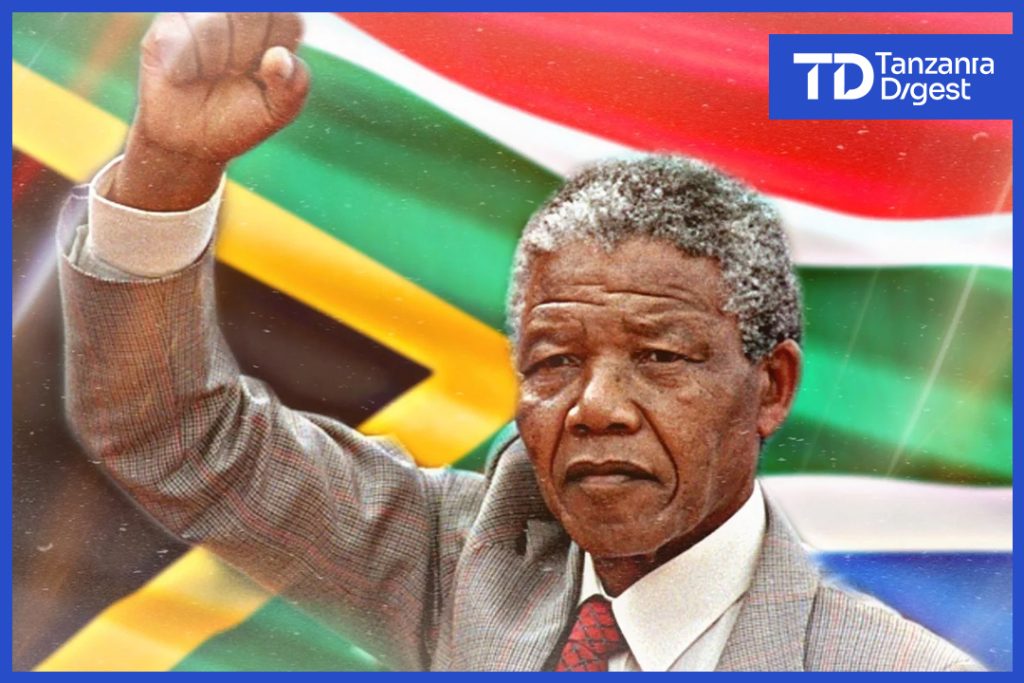South Africa’s journey from apartheid state to multiracial democracy remains one of history’s most remarkable transformations, guided by Nelson Mandela’s visionary leadership. Yet three decades after this transition, the persistence of “tubing“—an apartheid-era torture technique—reveals profound tensions between Mandela’s human rights legacy and contemporary realities in South Africa’s policing system.
1. Nelson Mandela’s Human Rights Legacy.
Nelson Mandela emerged from 27 years of imprisonment not with vengeance, but with an unwavering commitment to “justice through reconciliation”.
As South Africa’s first Black president, he championed restorative justice through the “Truth and Reconciliation Commission (TRC)”, establishing a global model for healing divided societies. His core philosophy— “ubuntu”— emphasized that “humanity is not solely embedded in an individual” but in community and mutual recognition.
For this work, he shared the 1993 Nobel Peace Prize with F.W. de Klerk and was later declared an “Ambassador of Conscience” by Amnesty International . Mandela framed freedom not merely as “casting off one’s chains,” but as building a society that “respects and enhances the freedom of others“.
2. The Barbaric Practice of “Tubing“.
Tubing is a torture technique developed during apartheid involving:
– Suffocation method:
A rubber tube is forced over a detainee’s nose and mouth, causing asphyxiation.
– Psychological terror:
Victims experience the sensation of drowning while interrogators extract confessions.
– Stealth brutality:
Minimal visible evidence, making investigation and prosecution difficult
This method gained international notoriety in 2014 when “Zinakile Fica”, chairman of the Glebelands block committee, died in police custody in Umlazi, KwaZulu-Natal. A forensic pathologist concluded that tubing likely induced the heart attack that killed him.
Despite apartheid’s formal end, a New York Times investigation found this technique remains “quietly persistent” among South African Police Service (SAPS) members, with numerous allegations of its continued use during interrogations.
3. Institutional Failure and Legacy Betrayal.
The persistence of tubing symbolizes systemic failures in post-apartheid South Africa:
– Unreformed Security Apparatus:
The SAPS retains structural and cultural elements from the apartheid era, despite legislative reforms. Police who learned torture techniques under the old regime often trained new recruits without accountability.
– Accountability Vacuum:
Investigations into police torture are rare, prosecutions rarer still. The Independent Police Investigative Directorate (IPID), established to oversee SAPS, lacks resources and political backing.
– TRC’s Unfinished Business:
The Truth and Reconciliation Commission exposed apartheid-era torture but failed to dismantle the institutional culture that perpetuated it. Many torturers received amnesty without institutional reform mechanisms.
Table: Mandela’s Vision vs. Policing Reality.
| No. | Mandela’s Democratic Vision. | Contemporary Policing Reality. |
| 1.0 | Human dignity as a foundational right. | Tubing designed to dehumanize and terrorize. |
| 2.0 | Accountability through rule of law. | Systemic impunity for police abuses. |
| 3.0 | Reconciliation through truth-telling. | Denial and concealment of torture practices. |
| 4.0 | Non-racial institutional culture. | Retention of apartheid-era policing methods. |
4. Why Apartheid’s Tools Endure.
Several interconnected factors explain tubing’s persistence:
– Institutional Culture Continuity:
Apartheid-era officers trained current SAPS members in interrogation techniques, passing down torture methods as “informal institutional knowledge“. The normalization of violence within policing structures survived political transition.
– Socioeconomic Frustration:
As South Africa remains “the world’s most unequal country” , police face daily pressure to “solve” crimes in marginalized communities. Torture becomes a shortcut for detectives overwhelmed by caseloads and public demand for results.
– Political Will Deficiency:
While Mandela’s government focused on political reconciliation, it neglected deep reform of the security services. Subsequent administrations tolerated police brutality—especially in townships—viewing it as “crime control” rather than human rights violations.
5. Mandela’s Unfinished Legacy.
The endurance of tubing represents not just institutional failure, but the “unfinished work” of Mandela’s vision:
– Symbolic vs. Substantive Change:
While South Africa has remarkable symbolic reparations (e.g., UNESCO’s Mandela Legacy Sites ), material and institutional transformation remains incomplete.
– Distortion of Ubuntu:
The philosophy meant to heal communities now highlights hypocrisy when state violence targets the vulnerable.
– Global Human Rights Paradox:
Mandela remains a “universal symbol of social justice” yet his nation tolerates the very practices he suffered under.
Conclusion: The “True Test” Unmet.
Nelson Mandela famously stated that “The true test of our devotion to freedom is just beginning” after apartheid’s end. Tubing’s persistence demonstrates that South Africa has yet to pass this test. While Mandela’s legacy inspired global movements for justice, the unbroken continuity of apartheid’s torture methods reveals how “institutional cultures outlast political revolutions”.
Until South Africa confronts the un-reformed structures within its security services, Mandela’s vision of a society where “all persons live together in harmony” will remain unrealized. This contradiction between aspirational legacy and ongoing violation makes tubing not just a policing issue, but a betrayal of the nation’s founding promise.
Read more analysis by Rutashubanyuma Nestory

